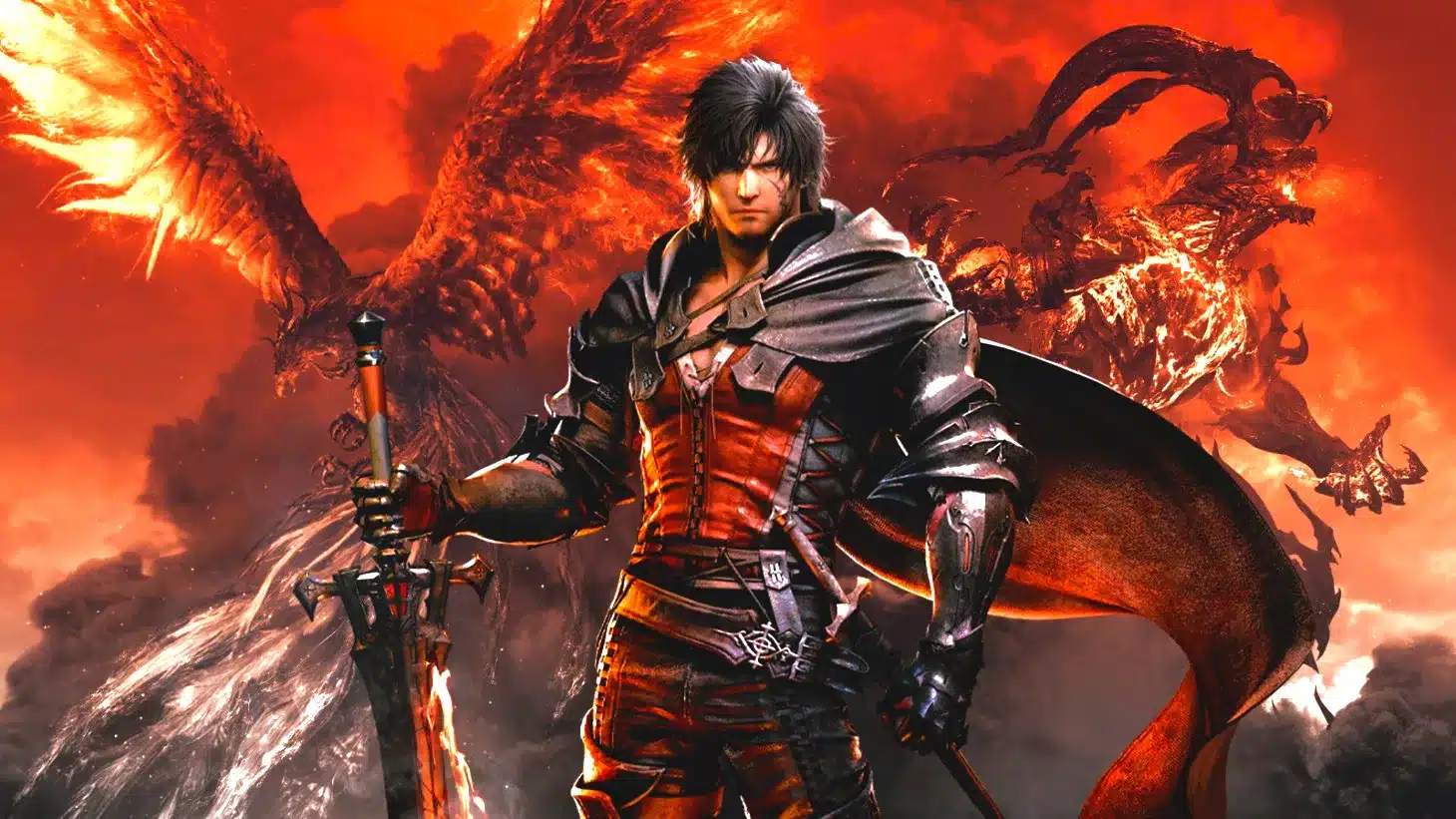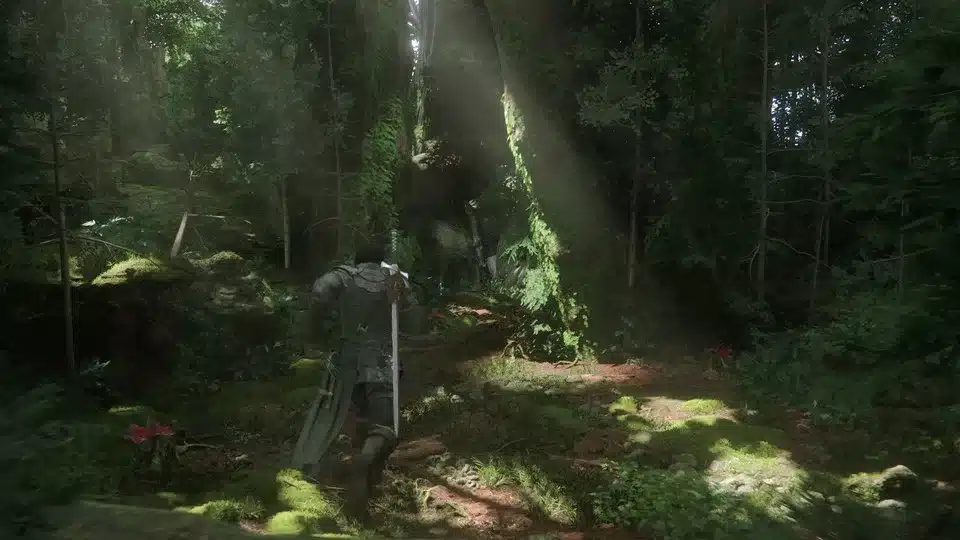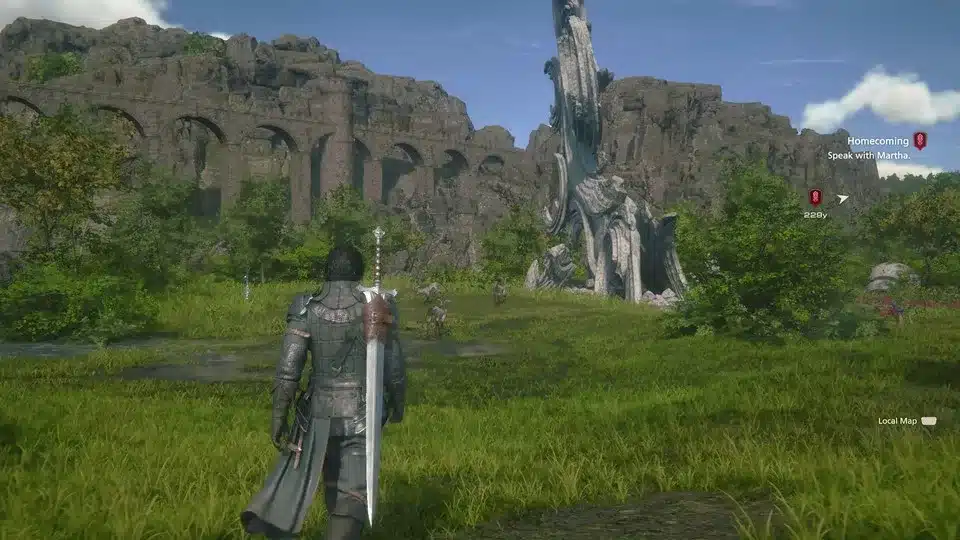A daring balancing act between tradition and modernity: Shortly before the PS5 release, we were allowed to try out the role-playing blockbuster for three hours and talk to the developers.
Naoki Yoshida, also known as “Yoshi-P” is aware that the field of action-heavy fantasy games will be a highly competitive one in the early summer of 2023:
Play The Legend of Zelda: Tears of the Kingdom as soon as it arrives! There”s no question that it”s going to be a wonderful game. But you”d better really be ready to play it on 22 June!” he says in his welcome address at publisher Square Enix”s play event. Because Final Fantasy 16 will be released on 22 June 2023.
The man knows what he”s talking about – not only has he been active in the games industry for 30 years, he”s also had his finger directly on the development pulse of the legendary role-playing game series since 2010”s Final Fantasy 14. The perfect person to introduce us to the latest instalment of the series, together with art director Hiroshi Minagawa and localisation director Michael-Christopher Koji Fox.
The heavy legacy of the role-playing series
Baking small rolls is apparently no longer possible with a name like “Final Fantasy”. And so the latest part begins with as much bombast as possible: a giant phoenix fights a breathless battle against an even bigger fire creature, the TV is barely able to get all the explosions and flying debris into the picture, while the epic music keeps cranking up in the background.
Remember the battle of Gandalf against the Balrog when they gave each other absolutely nothing in free fall in the opening of The Lord of the Rings: The Two Towers? It”s a bit like that here too, but with an extra Final Fantasy twist.
The series that began very humbly on the Japanese Famicom in December 1987 has become one of the most reliable constants in the games industry: everyone knows the name, everyone is at least roughly familiar with the concept. The super-simple but deeply iconic “Prelude” by Nobuo Uematsu is familiar even if you have nothing at all to do with video games – it was used in Japan in a Toyota advertisement among other things.
In short: Final Fantasy is cult, the expectations of the fans for a new part are correspondingly monumentally high. And with that, the responsibility of fulfilling those very expectations in a worthy manner weighs heavily on the shoulders of the developers. No wonder, then, that Final Fantasy 16 has been in the works for about seven years – even though, according to Naoki Yoshida, only about three people sat on the project and its basic concept in the first two years.
The battle system: a nice point of contention
Final Fantasy has long since moved away from the pixelated, turn-based combat focus of the series” beginnings. With each instalment, the graphics have become more elaborate and the combat system more varied. In the meantime, we have fully arrived in the world of real-time battles, in which not only the fighting itself is important, but also how good you look while doing it.
Final Fantasy hasn”t quite reached the action thriller realms of a Devil May Cry yet, but the basic direction is unmistakable. Which is probably largely thanks to Ryota Suzuki, who was employed at Capcom for many years with Devil May Cry, among other things, and has been employed at Square-Enix as “Battle Director” since 2019.
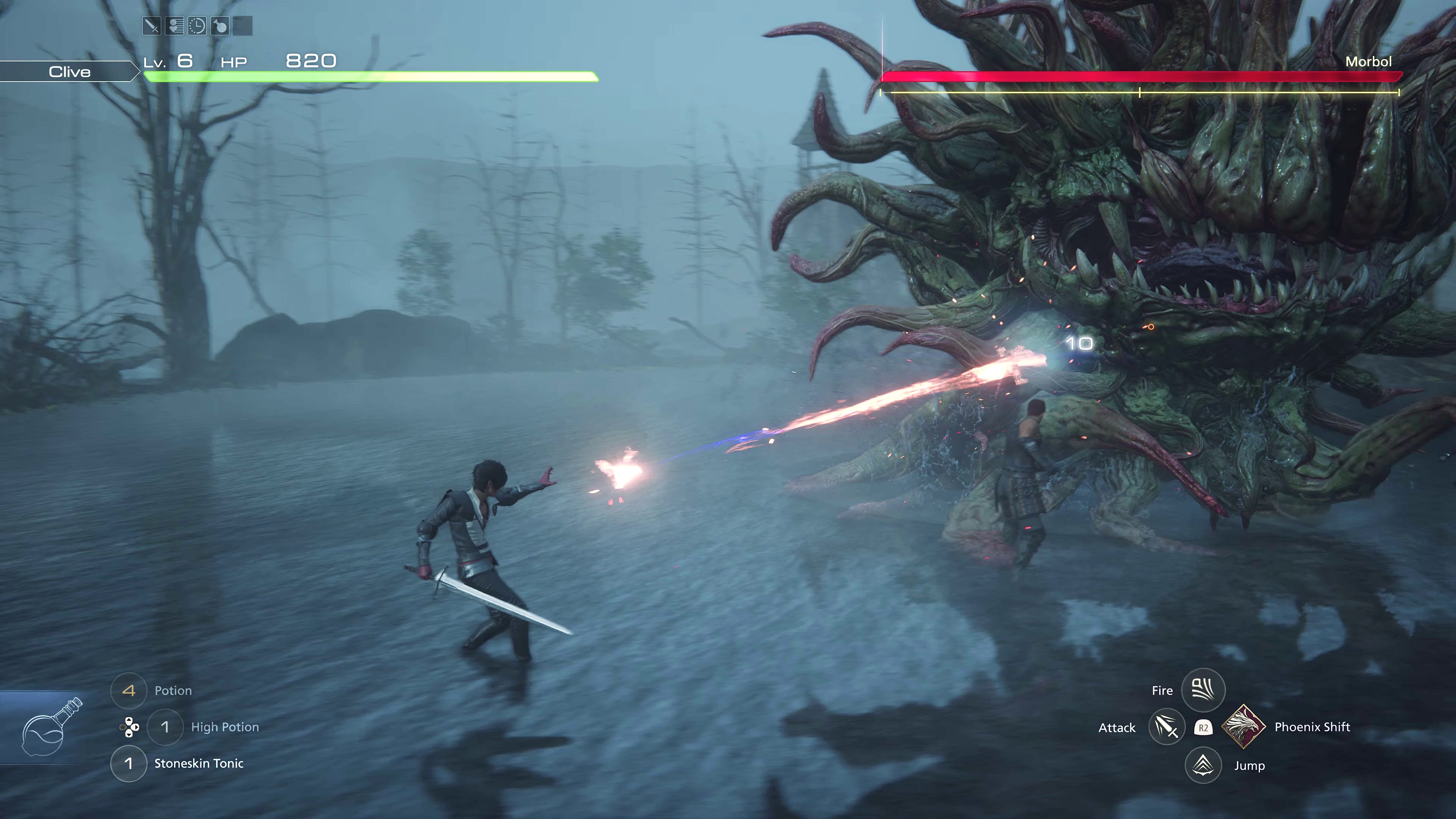
The consequence of this are fights that first of all look excellently choreographed: No matter whether I hammer my opponents with my sword, throw a well-aimed portion of fire magic at them, elegantly parry their attacks or master a button-press reaction test, which is followed by a “Cinematic Attack” or “Cinematic Dodge” – it always looks damn good, is full of effects and of course masses of score counters.
Of course, this should not be misunderstood to mean that the confrontations would virtually run by themselves. There is still a lot of finesse in the battles, and not without reason there is an extensive (and optional) tutorial at the beginning of the game. But Final Fantasy 16 is much more action-packed than ever before, and that may well upset old fans.
Table of Contents
The scenario: a Japanese Witcher medieval
They should then be picked up again by the general scenario. After the rather modern predecessor, Final Fantasy 16 once again emphasises the “fantasy” part of its name. Or what the Japanese generally think of as fantasy, as Messrs Yoshida and Minagawa admit with a chuckle in conversation.
Everything seems somehow European and medieval, which is no wonder. After all, the developers have visited many European cities and historical sites over the years, filling their lungs and notebooks with inspiration.
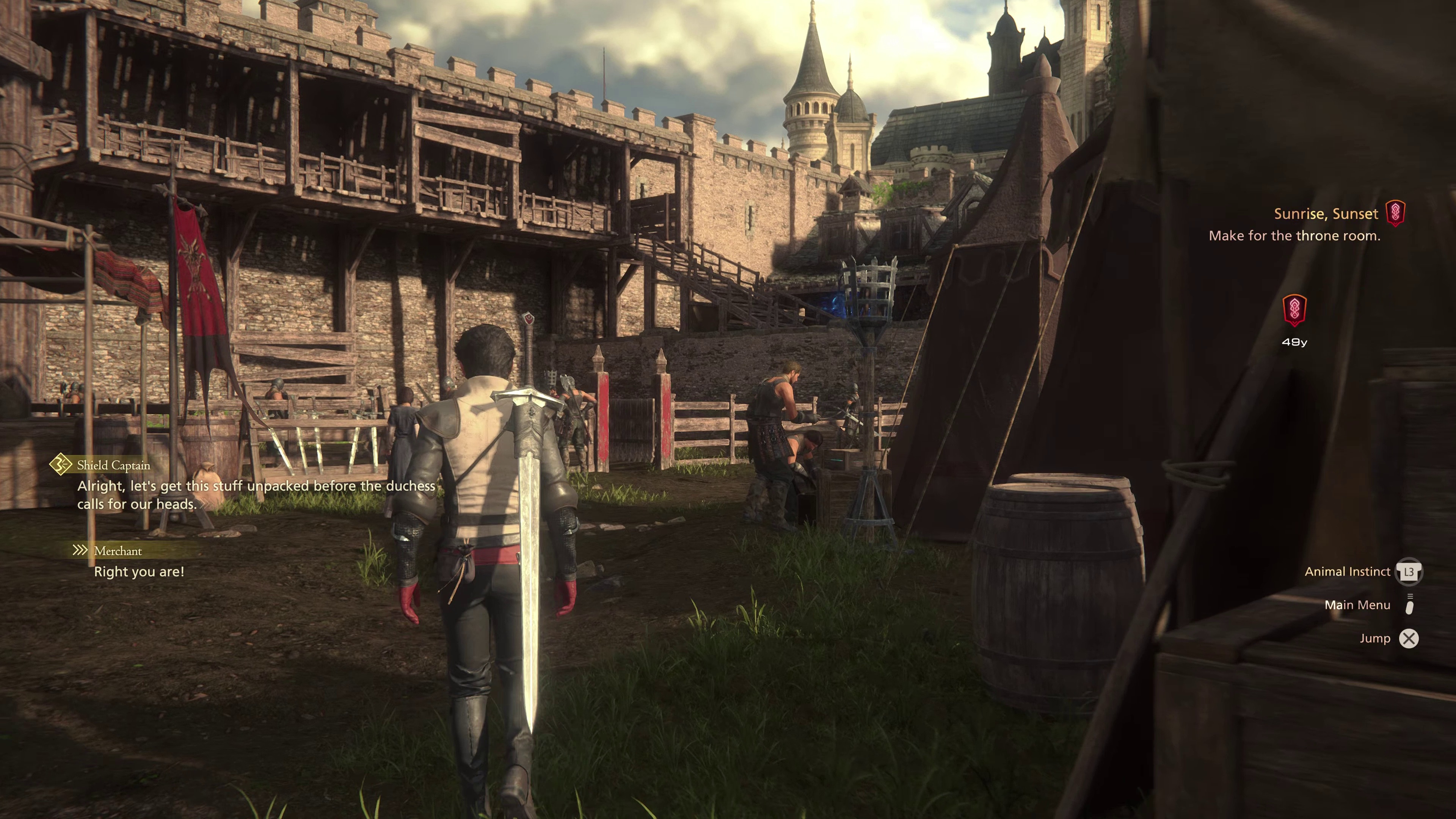
The country you will be travelling in this time is called “Valisthea”, which is home to the “Grand Duchy of Rosaria”, among other things, where the king”s son Clive Rosfield – the hero of Final Fantasy 16 – grows up.
He is surrounded by his brother Joshua, his stepsister Jill, his father, the mild king, his mother, the beastly queen, and many other characters who play sometimes more, sometimes less important roles in the course of the extensive campaign.
This is important insofar as Final Fantasy 16 spans several time periods: at the beginning Clive is a teenager, his siblings children and his dog “Torgal” a puppy. One time jump (and many hours of gameplay) later, the grown-up and considerably more fuzzy-haired Clive is surrounded by a fully-grown Jill as well as a much larger and also excellently fighting cuddly dog. And of course, in good old series tradition, there is once again a good friend and companion named Cid, but now fully named “Cidolfus Telamon”.
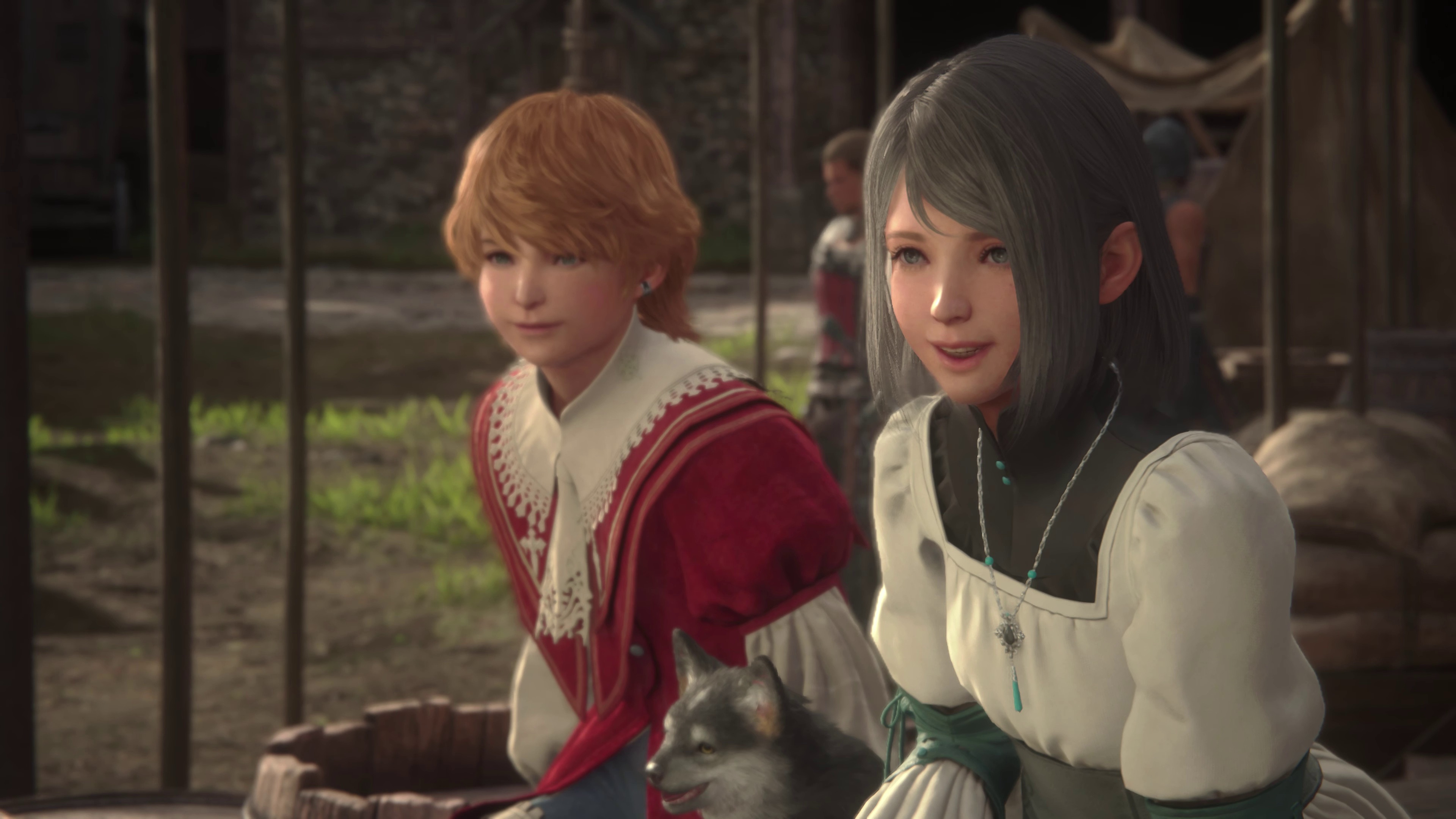
This troupe, as usual, immediately takes on various chief adversaries, first and foremost the evil mage Benedikta Harman. Like all the main characters of the game, she is a so-called “Dominant”, i.e. mysteriously connected to “Eikons”: Monstrous elemental beings into which individuals can transform at certain points (usually prescribed by the game).
In the past, these summons were known as “phantom beats” or “espers”, but now they are called “eikons”. But the principle remains the same and results in some gigantic beasts that are assigned to the elements and whose names should mean something to players familiar with the series: “Ifrit”, “Shiva”, “Ramuh” or “Bahamut” have been part of the Final Fantasy inventory for a very long time.
Only now you don”t just call them to your aid and enjoy beautiful battle animations, but transform yourself into them and then throw absurd amounts of fire, water or lightning around yourself. The introductory fight described earlier, for example, was a battle between two eikons. Which, by the way, will be played out again later in the game, only much more extensive and effective.
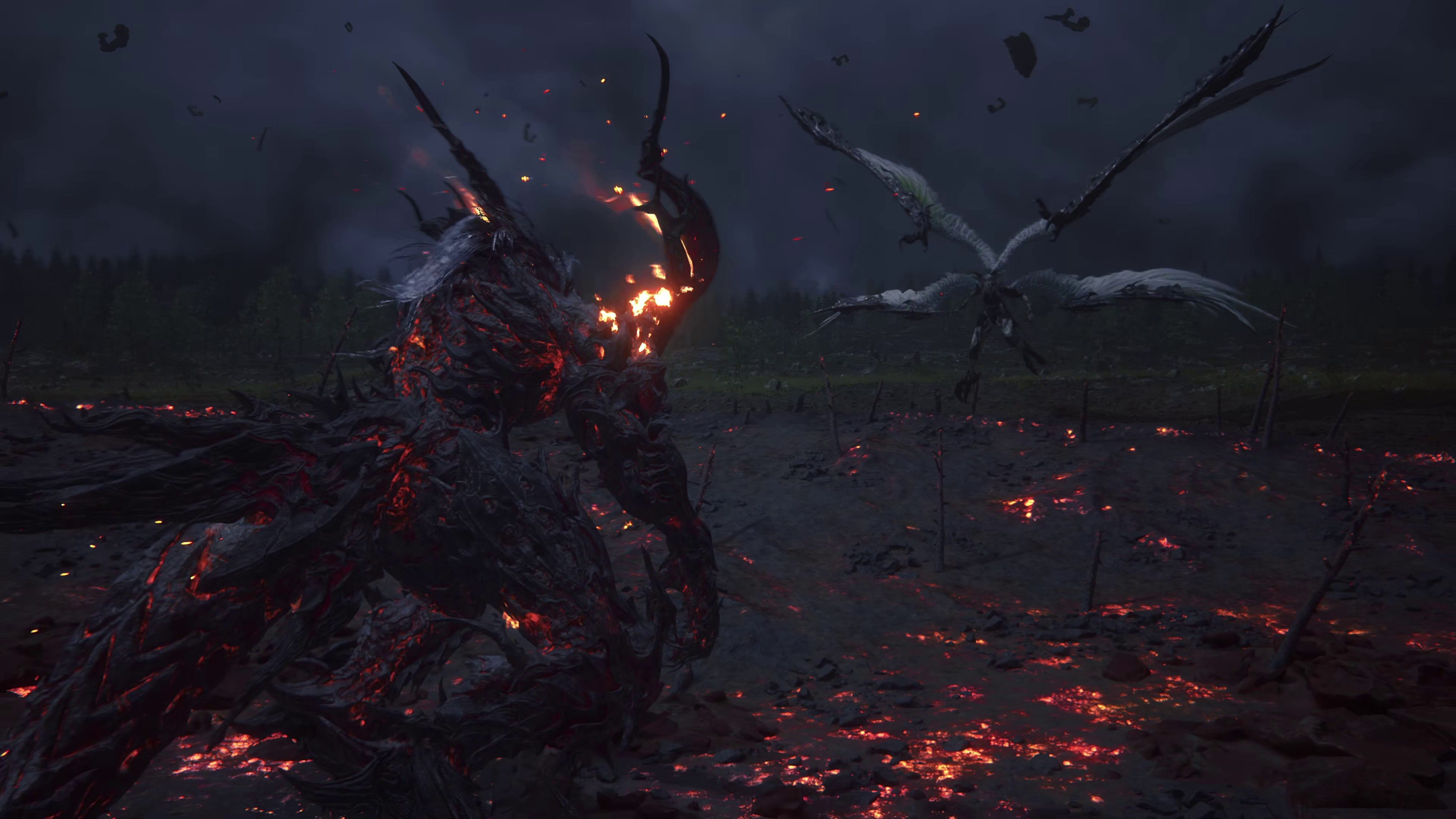
The world: sometimes tube, sometimes open world
The large, open world is one of the defining elements of many modern role-playing games: The Witcher 3, Cyberpunk 2077, Skyrim – all leave it up to the person at the gamepad or keyboard to decide which direction to go in and what to do with their time there. Final Fantasy has also dipped its little toe into the big open sea time and time again in the past, especially in Part 15.
Number 16 cranks back the ambitions a bit and presents an interesting mix: the beginning of the game is very linear. You shimmy from mission marker to mission marker, enjoying the many, many real-time cutscenes in between, fighting here, fighting there and then watching more cutscenes. No, seriously, there really are a hell of a lot of these cutscenes.
It”s only later in the game that this approach changes: The world opens up to a certain degree, you walk relaxed through forests and across meadows, and meet NPCs. They are not only available for a chat, but also want to impose smaller and larger orders on you, which you can take or leave.
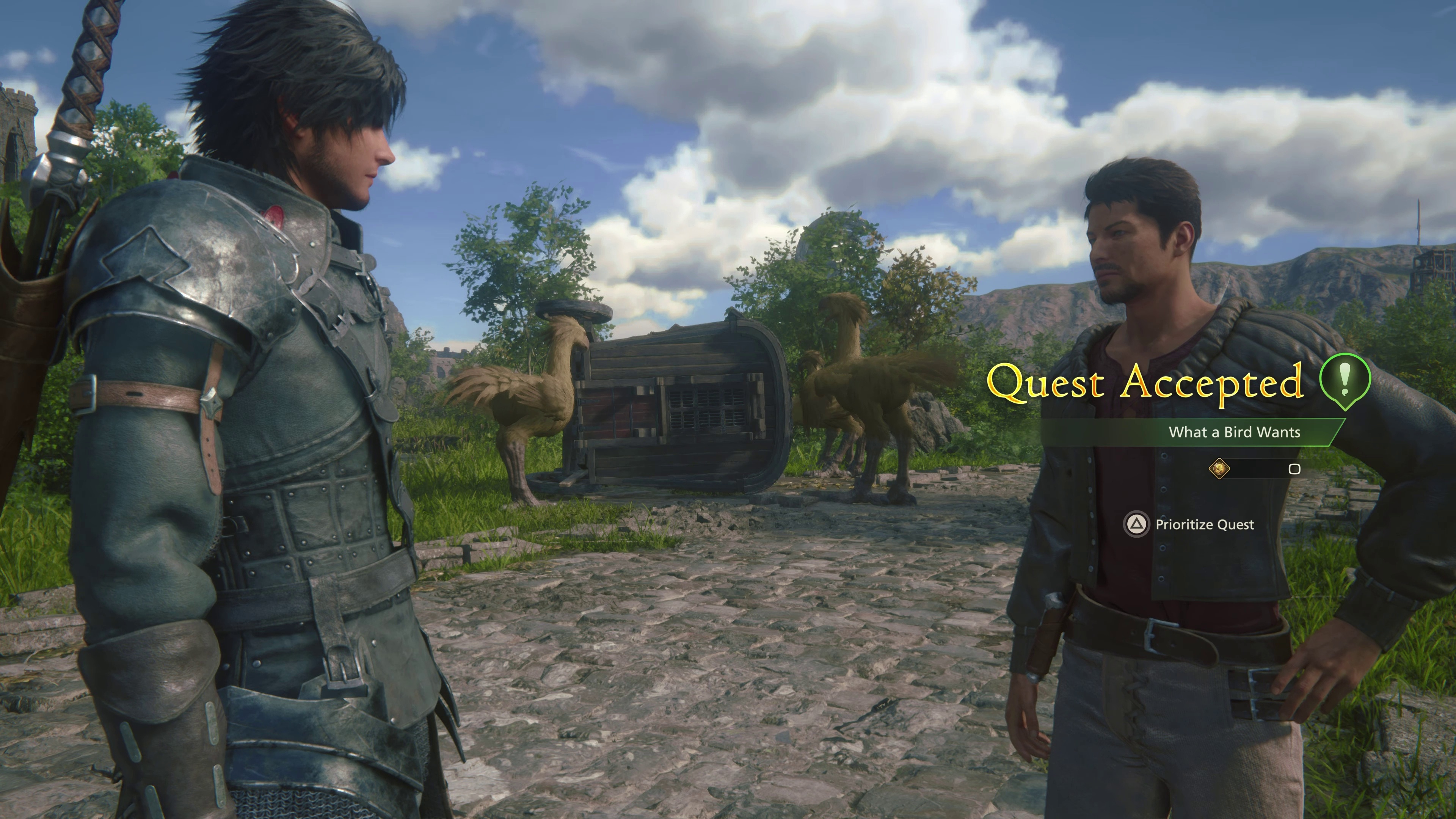
The currency (“Gil”) obtained by completing such quests and mastering battles can be invested in new swords, armour or useful materials in shops standing around. In addition, the world is full of animals that ignore you until you attack them: big horns, killer bees, giant lizards or clay crabs put up a surprising amount of resistance, but also give good amounts of loot and experience points if you succeed. Leveling up is automatic, but earned ability points may be invested in fresh combat combos, enemy provocations or magic enhancements.
The Traditions: Monsters, companions and lots of drama
While in the open world you are usually allowed to decide for yourself if you want to fight or not, in the more linear part of Final Fantasy 16 they are usually part of the mission design and therefore unavoidable: Small goblins, large goblins, a huge mixture of tentacles and teeth called “Morbol”, mages who enjoy lightning, imperial legionaries in thick armour or sometimes a silly-named, but all the more powerful “Dragoon of the Dazzling Dawn” ensure that the combat system quickly becomes second nature.
The enemies have two energy bars: one for their life energy and one for their will to fight. If you land several successful combos in a row, the enemy”s will is broken for a short moment – which you should of course use to smother them with as many attacks as possible while the will bar automatically refills itself.
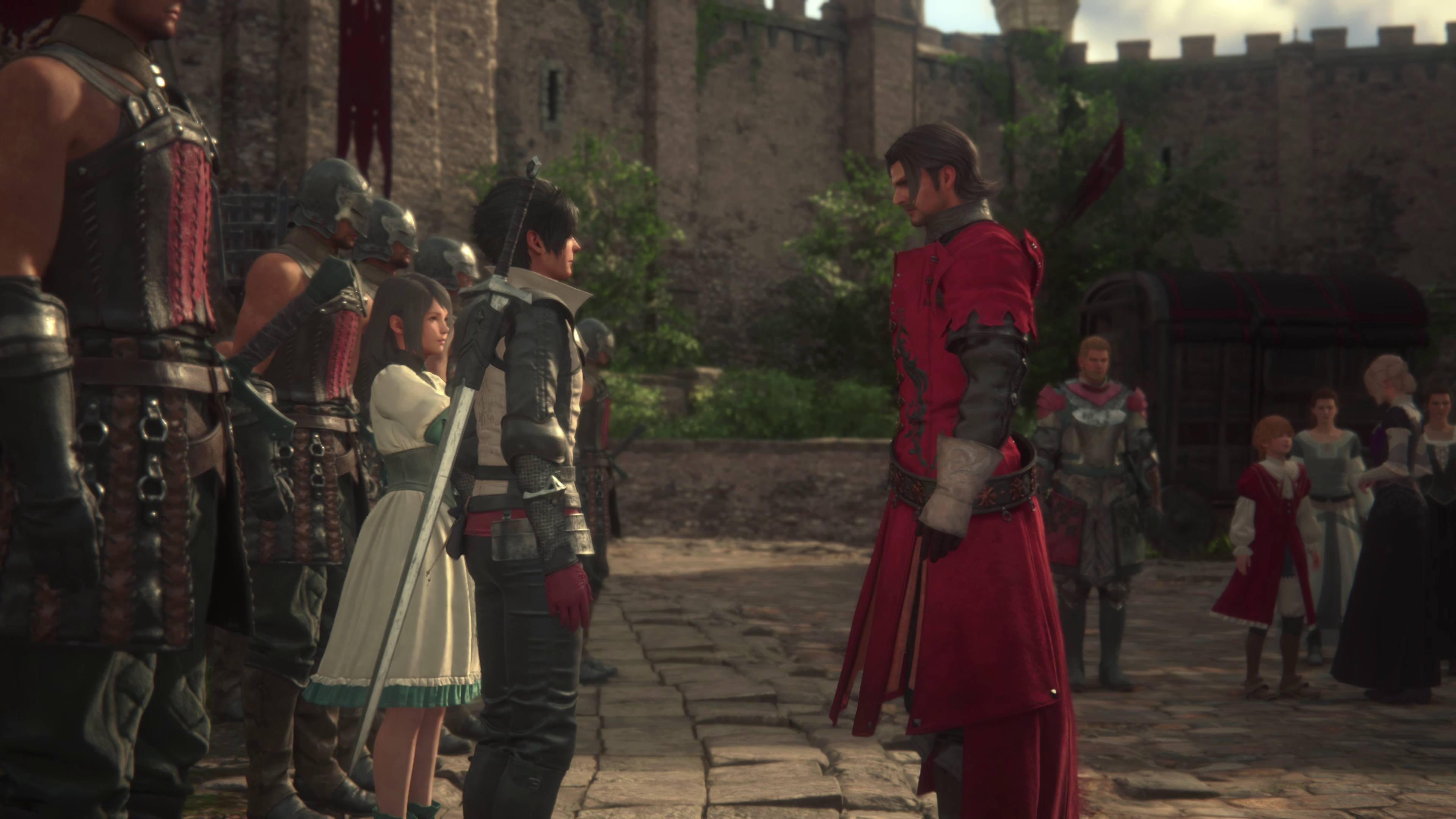
You”ll also rarely have to do this alone, as Clive (or one of the other characters you may control during the adventure) is usually travelling in a group. His colleagues fight along fully automatically and very competently – but if you”re familiar with Final Fantasy history, you”re probably better off not getting too attached to individual noses.
Generally, the developers promise a rather more serious and occasionally dark storyline. Naoki Yoshida puts it like this:
By showing the dark side, we also emphasise the light. This shows that there is always a way out of the darkness, a reason for hope. Hopefully, when the players reach the end of the adventure, they will see it that way.
The visuals: everything explodes, but the hairdo fits
Till then, the oversized bosses in particular have to be cleared out of the way: Like the monstrous griffin creature called “Garuda”, Eikon by Benedikta Harman, which relies on wind forces and consequently plunges the whole environment into violent storms during the battle. Or the already repeatedly mentioned welcome fight, in which Phoenix and Ifrit go head-to-head, immersing the screen in a non-stop thunderstorm of lightning, fireballs and sheer destruction.
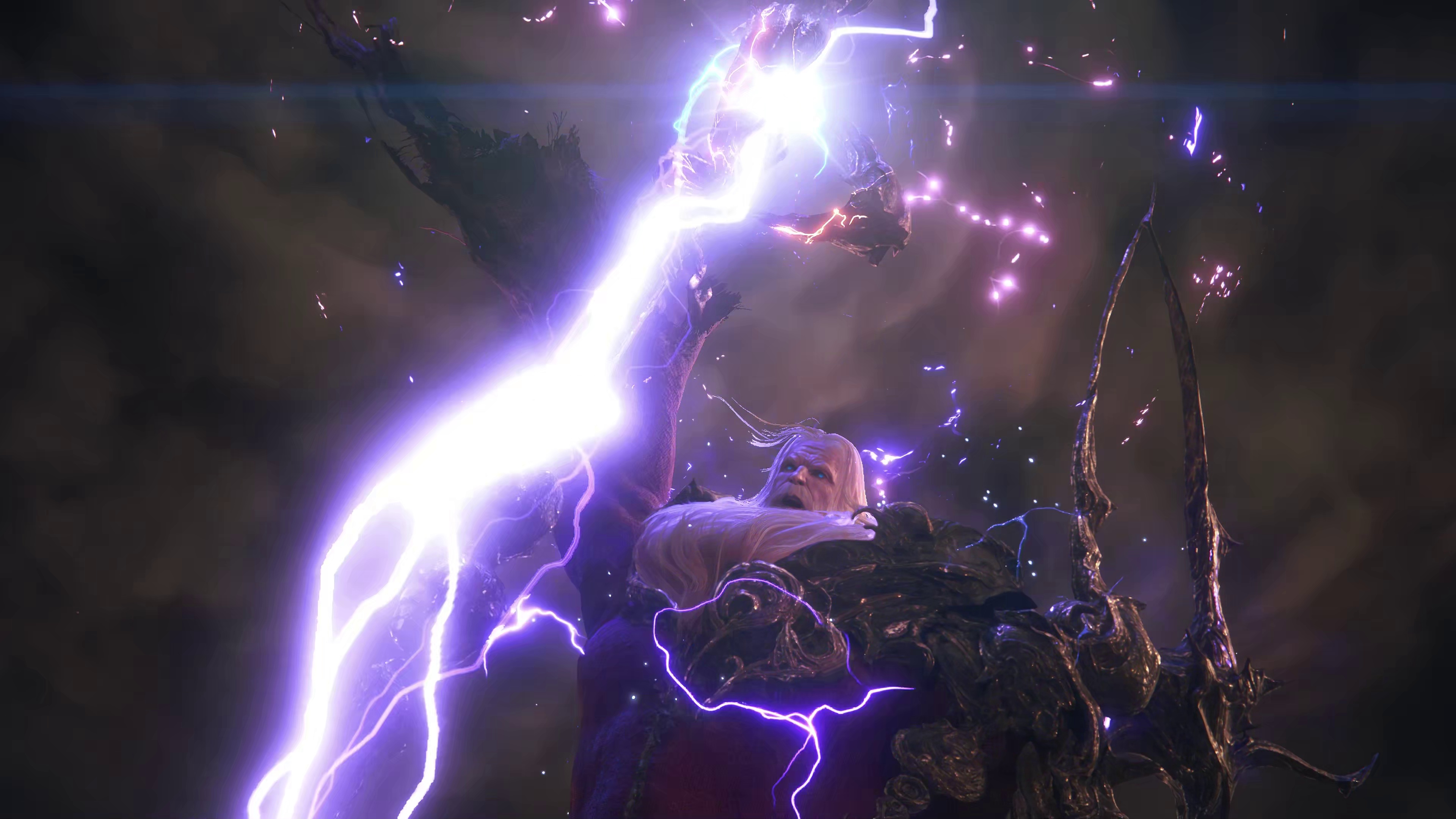
At its heart, this fight in particular may not be much more than a collection of Quick Time Reactions, but the staging is simply breathtaking. According to Naoki Yoshida and Hiroshi Minagawa, Final Fantasy 16 should please be played on a very large screen with as thick a sound system on it as possible, if possible. There”s a reason for that.
The game will be released first on the PlayStation 5, and a PC version is promised but will follow at some point later. And in any case, one has to say: the thing looks really good! Of course, you can grumble about individual aspects, such as the rather waxy faces of the characters, the silly hairstyles typical of JPRG, which even the toughest battle won”t harm, or the fact that even the older generations look as if they”ve only just passed their school-leaving exams here.
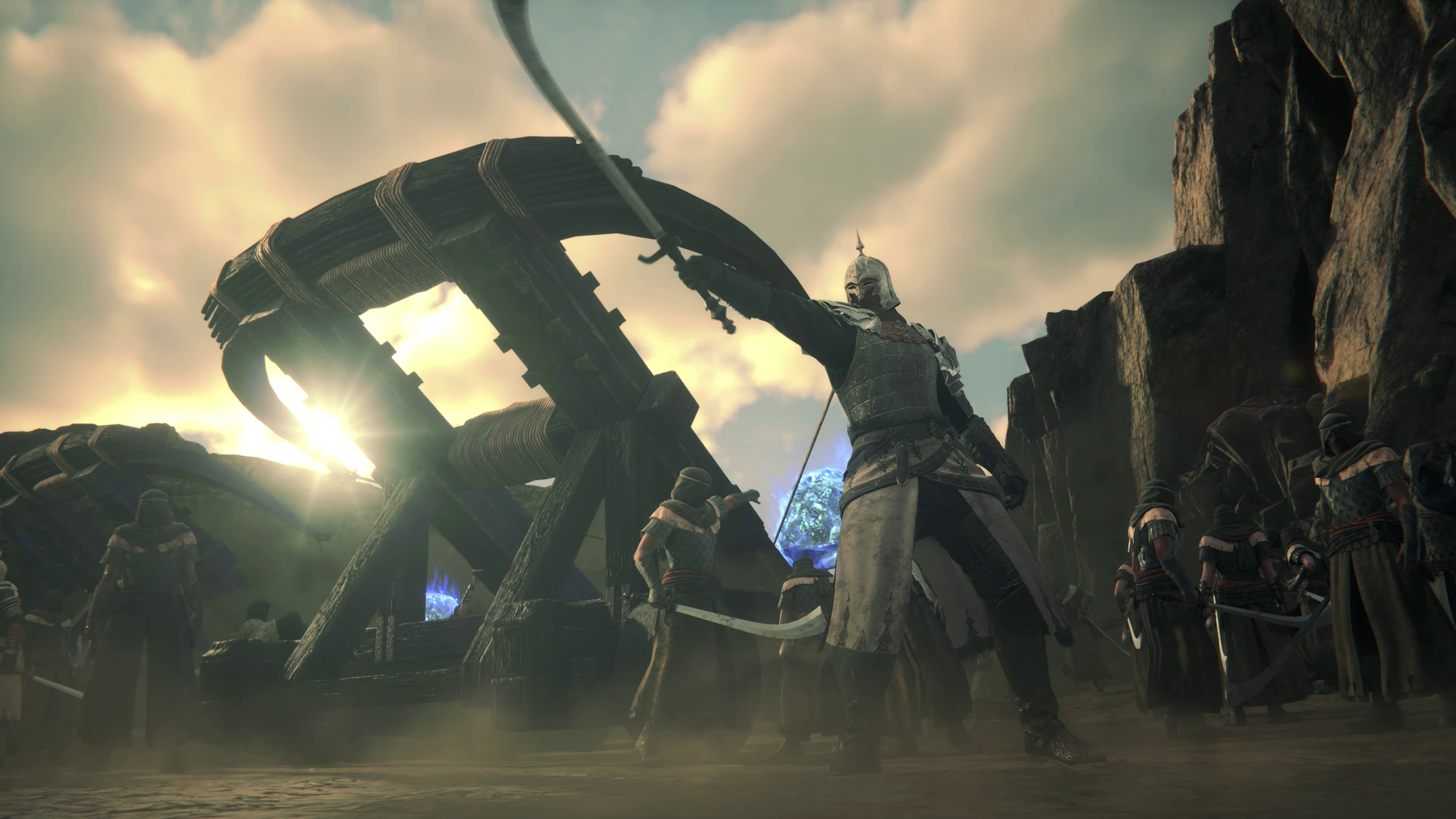
But the whole shebang is already pretty super. Especially the effects department of the development team deserves a raise! There are virtually no loading times, the scenarios flow smoothly into each other, the amount of real-time cutscenes rivals a “Lord of the Rings” marathon.
Only the stability of the framerate, which drops noticeably in the more noise-filled moments, still needs work. But as it says so well in the NDA that we had to sign for the play event?
This is a special version that has been made available to the media. The content may differ from the final version.
Editorial conclusion
I am impressed! The play event gave me three hours to try Final Fantasy 16, and I really would have liked more! A clear difference to its direct predecessor, which I was already sick of after less than an hour. Clive and his family are clearly more interesting to me than Noctis and his boy band entourage. And the focus on a more serious storyline and the action-heavy gameplay also suit me perfectly.
The developers have taken a very close look at the Witcher games, Skyrim or Game of Thrones and learned from them – which you can see not only in the medieval-European scenario, but also hear in the hefty language, which with its non-stop raining down of F-bombs should quickly bring a blush to the faces of meek players.
Now, of course, one might ask: Is this Final Fantasy at all? And assuming that the series reinvents itself with every part, there is only one answer: Of course it is! Chocobos are in, Esper are in, the “Victory Fanfare” now resounds chorally – it”s a Final Fantasy. It”s just potentially for people who don”t really know much about Final Fantasy otherwise.

